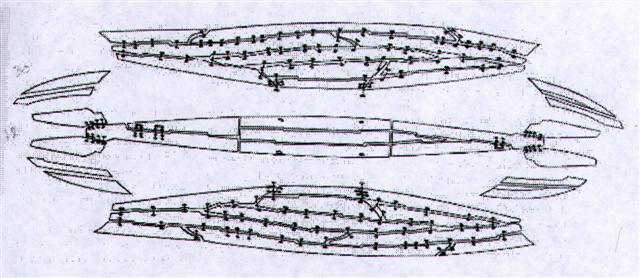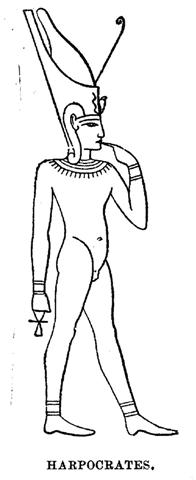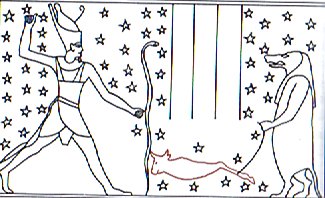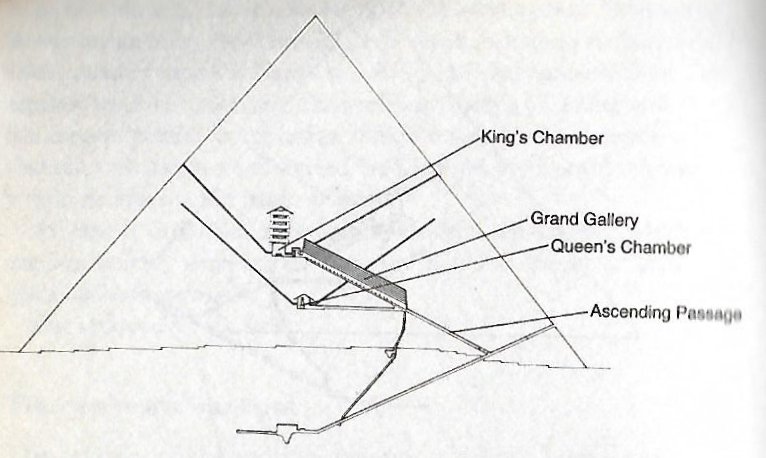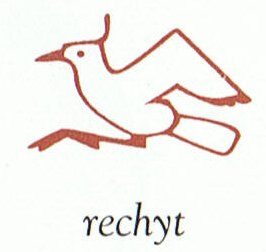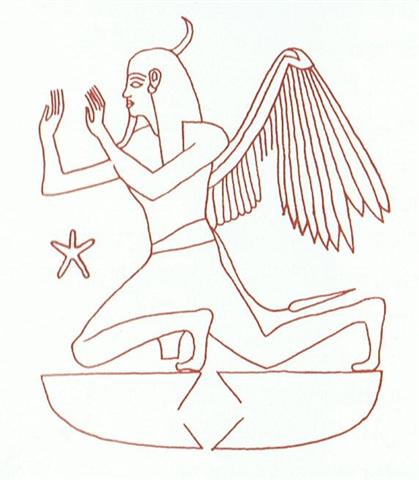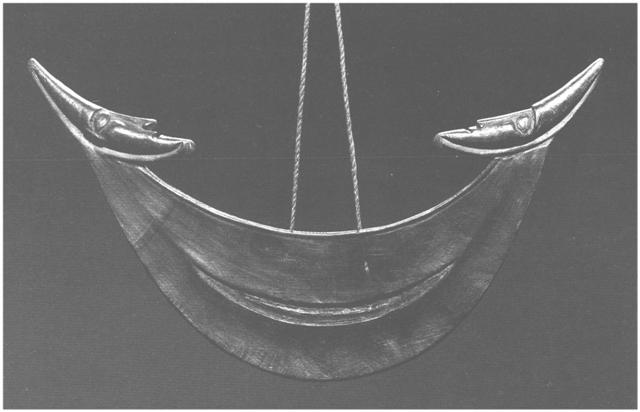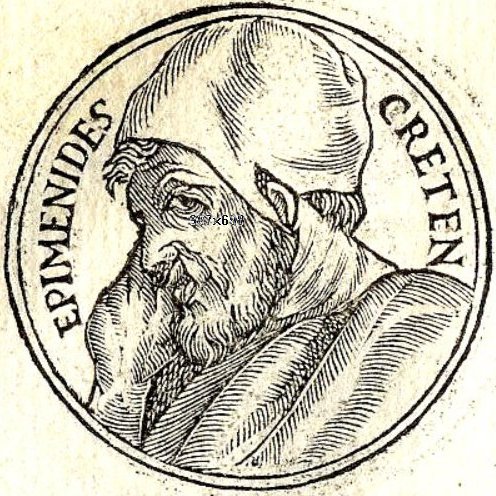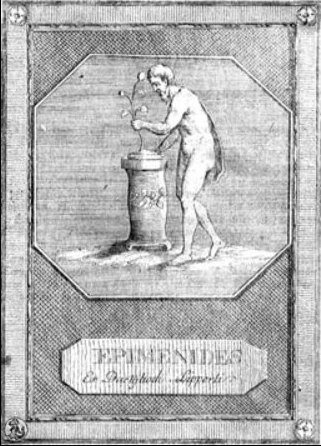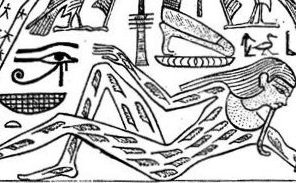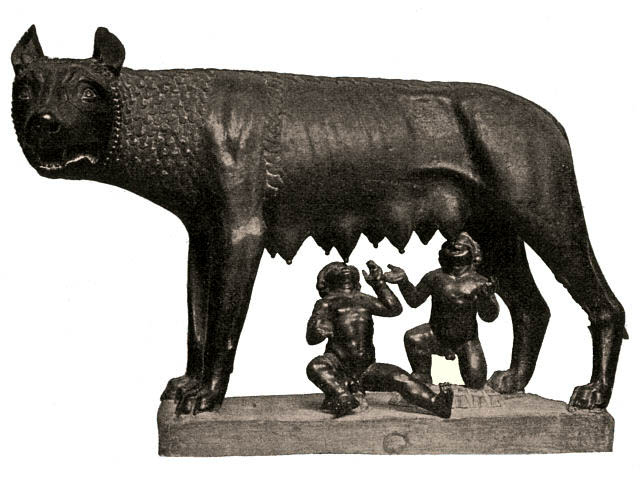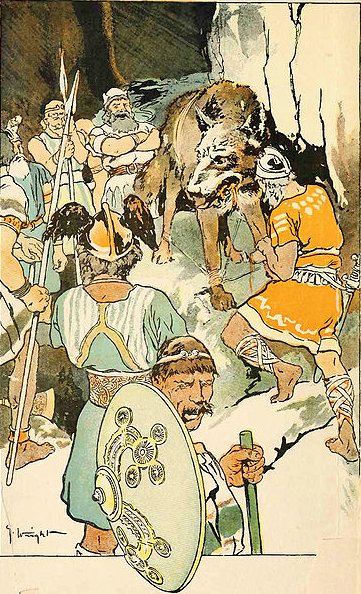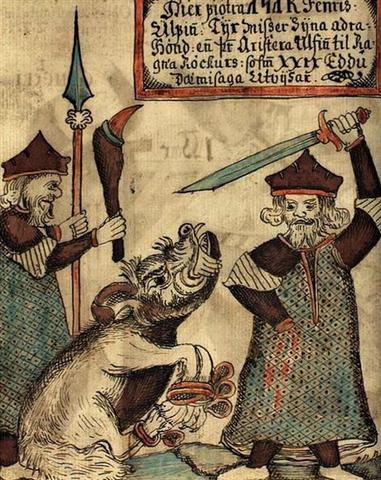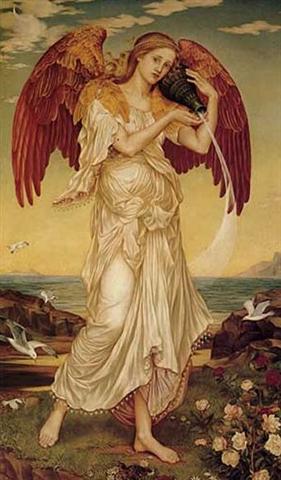Orion was below the ecliptic and therefore this constellation might seem not to belong in the zodiac of the Sun → which could have made the Sun canoe being perceived as 'crooked':
... From the natives of South Island [of New Zealand] White [John] heard a quaint myth which concerns the calendar and its bearing on the sweet potato crop. Whare-patari, who is credited with introducing the year of twelve months into New Zealand, had a staff with twelve notches on it. He went on a visit to some people called Rua-roa (Long pit) who were famous round about for their extensive knowledge. They inquired of Whare how many months the year had according to his reckoning. He showed them the staff with its twelve notches, one for each month. They replied: 'We are in error since we have but ten months. Are we wrong in lifting our crop of kumara (sweet potato) in the eighth month?' Whare-patari answered: 'You are wrong. Leave them until the tenth month. Know you not that there are two odd feathers in a bird's tail? Likewise there are two odd months in the year.' The grateful tribe of Rua-roa adopted Whare's advice and found the sweet potato crop greatly improved as the result ...
... They go inland at the land. The child nursed and tended grows up, is able to go and play. Each day he now goes off a bit further away, moving some distance away from the house, and then returns to their house. So it goes on and the child is fully grown and goes to play far away from the place where they live. He goes over to where some work is being done by a father and son. Likāvaka is the name of the father - a canoe-builder, while his son is Kiukava. Taetagaloa goes right over there and steps forward to the stern of the canoe saying - his words are these: 'The canoe is crooked.' (kalo ki ama). Instantly Likāvaka is enraged at the words of the child. Likāvaka says: 'Who the hell are you to come and tell me that the canoe is crooked?' Taetagaloa replies: 'Come and stand over here and see that the canoe is crooked.' Likāvaka goes over and stands right at the place Taetagaloa told him to at the stern of the canoe. Looking forward, Taetagaloa is right, the canoe is crooked. He slices through all the lashings of the canoe to straighten the timbers. He realigns the timbers. First he must again position the supports, then place the timbers correctly in them, but Kuikava the son of Likāvaka goes over and stands upon one support. His father Likāvaka rushes right over and strikes his son Kuikava with his adze. Thus Kuikava dies. Taetagaloa goes over at once and brings the son of Likāvaka, Kuikava, back to life. Then he again aligns the supports correctly and helps Likāvaka in building the canoe. Working working it is finished ... We can imagine a realignment of the timbers
could have resulted in what can be seen in the round ceiling at Dendera:
Here our 12 modern stations of the solar zodiac (redmarked in the illustration above) were contrasted by 7 bluemarked ones. At Libra (redmarked) the blue-marked Sun Child (Horus, Harpokrates) was balancing.
Then there were 4 stations coloured magenta with Orion below and the other 3 up close to the north pole.
Presumably the creators of the Dendera round ceiling had been inspired by the view of the ancient Babylonians:
Here Orion was the True Shepherd of Anu, illustrated 'on the March' - like the magenta coloured Orion figure in the Dendera ceiling. He walked on dry ground → he had made landfall. ... During his descent the ancestor still possessed the quality of a water spirit, and his body, though preserving its human appearance, owing to its being that of a regenerated man, was equipped with four flexible limbs like serpents after the pattern of the arms of the Great Nummo. The ground was rapidly approaching. The ancestor was still standing, his arms in front of him and the hammer and anvil hanging across his limbs. The shock of his final impact on the earth when he came to the end of the rainbow, scattered in a cloud of dust the animals, vegetables and men disposed on the steps. When calm was restored, the smith was still on the roof, standing erect facing towards the north, his tools still in the same position. But in the shock of landing the hammer and the anvil had broken his arms and legs at the level of elbows and knees, which he did not have before. He thus acquired the joints proper to the new human form, which was to spread over the earth and to devote itself to toil ...  The Scales held between the claws of the Scorpion have here been illustrated not with a Horus child in a circle precariously balancing above but with a pair of triangles ('wings') fastened below. In ancient Babylonia up was in the north, in ancient Egypt up was in the south. In ancient Babylonia they had a pair of rivers (a slow one and fast raging one), in ancient Egypt only one. Possibly therefore, this pair of triangles below corresponded to the pair of shafts from the King's Chamber together with those from the Queen's Chamber - not emerging to the outside:
... The basic idea of the Great Pyramid was that it should be a representation of the northern hemisphere of the earth, a hemisphere projected on flat-surfaces as is done in map-making ... The Great Pyramid was a projection on the four triangular surfaces. The apex represented the pole and the perimeter represented the equator. This is the reason why the perimeter is in relation to 2pi to the height. The Great Pyramid represents the northern hemisphere in a scale of 1:43,200 ... ... Rehua; an important Maori star and an influential god, elder brother of Tane dwelling in the tenth heaven. Rehua has been variously identified with Jupiter by Tregear, with Sirius by Stowell, and with Antares by Best, and there can be no doubt that the name was applied to different objects in various sections of New Zealand. An old native declared: 'Rehua is a star, a bird with two wings; one wing is broken. Under the unbroken wing is Te Waa-o-Tamarereti (the Canoe of Tamarereti is the Tail of Scorpius in this instance). When Rehua mates with his wife Pekehawani (a star close to Antares) the ocean is windless and motionless.' ...
Kará. Wing of bird. Karaga, uproar, row: he-tagi te karaga. Karatu'u, to remain upright (said of a spinning top). Karava, low cave; hiding place under rocks in the sea (where lobsters hide). Tagata kava - tagata kakara i te kava, man with smelly armpits.Vanaga. Wing. Karatia, grace. Karava: 1. Cave. 2. To strain to hit a mark. Karavarava, manava karavarava, colic. Churchill. Pau.: Kara, flint. Mgv.: kara, a heavy stone. Ta.: ará, a black flint. Ma.: kara, basalt. Karaea, karamea clay. Ta.: araea, id. Mq.: kaaea, red ochre. Ma.: karamea, id. Karaga-puruga, mother-in-law. Ta.: purua, parent-in-law. Karaini, bait, decoy, allurement. Ta.: arainu, bait, lure. Karapoga, throat, gullet. Churchill. Mgv.: Karaga, a cry. Sa.: 'alaga, id. Ma.: karanga, id. Karakara, to smell slightly a pleasant odor. Ta.: aara, good odor. Mq.: kakaa, to exhale a pleasant odor. Sa.: 'alala, to smell of hot meat. Ma.: kakara, savory. Karako, a bird. Mq.: kaako, id. Karapihi, suckers of the octopus. Mq.: karapihi, kaapihi, id. Karava, large veins which appear under strain. Sa.: 'alava, veins, fibers. Churchill. Mq.: Karakara, a bird. Ha.: alaala, id. Churchill.
Clearly the blue-marked figures in Dendera belonged in the Milky Way, this we can deduce from the Babylonian illustration. And the solar zodiac crossed the Milky Way between Gemini (the Great Twins) and the Bull of Heaven (Taurus). ... Men's spirits were thought to dwell in the Milky Way between incarnations. This conception has been handed down as an Orphic and Pythagorean tradition fitting into the frame of the migration of the soul. Macrobius, who has provided the broadest report on the matter, has it that souls ascend by way of Capricorn, and then, in order to be reborn, descend again through the 'Gate of Cancer'. Macrobius talks of signs; the constellations rising at the solstices in his time (and still in ours) were Gemini and Sagittarius: the 'Gate of Cancer' means Gemini. In fact, he states explicitly (I,12.5) that this 'Gate' is 'where the Zodiac and the Milky Way intersect'. Far away, the Mangaians of old (Austral Islands, Polynesia), who kept the precessional clock running instead of switching over to 'signs', claim that only at the evening of the solstitial days can spirits enter heaven, the inhabitants of the northern parts of the island at one solstice, the dwellers in the south at the other ... Considering the fact that the crossroads of ecliptic and Galaxy are crisis-resistant, that is, not concerned with the Precession, the reader may want to know why the Mangaians thought they could go to heaven only on the two solstitial days. Because, in order to 'change trains' comfortably, the constellations that serve as 'gates' to the Milky Way must 'stand' upon the 'earth', meaning that they must rise heliacally either at the equinoxes or at the solstices. The Galaxy is a very broad highway, but even so there must have been some bitter millenia when neither gate was directly available any longer, the one hanging in midair, the other having turned into a submarine entrance ... The other place where the solar zodiac crossed the Milky Way was at the Eagle & Dead Man:
... In late September or early October 130, Hadrian and his entourage, among them Antinous, assembled at Heliopolis to set sail upstream as part of a flotilla along the River Nile. The retinue included officials, the Prefect, army and naval commanders, as well as literary and scholarly figures. Possibly also joining them was Lucius Ceionius Commodus, a young aristocrat whom Antinous might have deemed a rival to Hadrian's affections. On their journey up the Nile, they stopped at Hermopolis Magna, the primary shrine to the god Thoth. It was shortly after this, in October [in the year A.D.] 130 - around the time of the festival of Osiris - that Antinous fell into the river and died, probably from drowning. Hadrian publicly announced his death, with gossip soon spreading throughout the Empire that Antinous had been intentionally killed. The nature of Antinous's death remains a mystery to this day, and it is possible that Hadrian himself never knew; however, various hypotheses have been put forward. One possibility is that he was murdered by a conspiracy at court. However, Lambert asserted that this was unlikely because it lacked any supporting historical evidence, and because Antinous himself seemingly exerted little influence over Hadrian, thus meaning that an assassination served little purpose. Another suggestion is that Antinous had died during a voluntary castration as part of an attempt to retain his youth and thus his sexual appeal to Hadrian. However, this is improbable because Hadrian deemed both castration and circumcision to be abominations and as Antinous was aged between 18 and 20 at the time of death, any such operation would have been ineffective. A third possibility is that the death was accidental, perhaps if Antinous was intoxicated. However, in the surviving evidence Hadrian does not describe the death as being an accident; Lambert thought that this was suspicious. Another possibility is that Antinous represented a voluntary human sacrifice. Our earliest surviving evidence for this comes from the writings of Dio Cassius, 80 years after the event, although it would later be repeated in many subsequent sources. In the second century Roman Empire, a belief that the death of one could rejuvenate the health of another was widespread, and Hadrian had been ill for many years; in this scenario, Antinous could have sacrificed himself in the belief that Hadrian would have recovered. Alternately, in Egyptian tradition it was held that sacrifices of boys to the Nile, particularly at the time of the October Osiris festival, would ensure that the River would flood to its full capacity and thus fertilize the valley; this was made all the more urgent as the Nile's floods had been insufficient for full agricultural production in both 129 and 130. In this situation, Hadrian might not have revealed the cause of Antinous's death because he did not wish to appear either physically or politically weak. Conversely, opposing this possibility is the fact that Hadrian disliked human sacrifice and had strengthened laws against it in the Empire ... Maybe we should understand this place as the stern of the Royal Double Canoe with Gemini at its bow.
... The original story was by Diogenes Laertius, an Epicurean philosopher circa early half third century, in his book On the Lives, Opinions, and Sayings of Famous Philosophers. The story is in Chapter ten in his section on the Seven Sages, who were the precursors to the first philosophers. The sage was Epimenides. Apparently Epimenides went to sleep in a cave for fifty-seven years. But unfortunately, 'he became old in as many days as he had slept years'. Although according to the different sources that Diogenes relates, Epimenides lived to be one hundred and fifty-seven years, two hundred and ninety-nine years, or one hundred and fifty-four years. A similar story is told of the Seven Sleepers of Ephesus, Christian saints who fall asleep in a cave while avoiding Roman persecution, and awake more than a century later to find that Christianity has become the religion of the Empire ...
After having brought onboard also the sweet long roots of ti and the little bitter kape seedlings there was a pair of great Trees (→ alluding to how Tane raised the sky roof high):
... Then the men came back for the hauhau tree, the paper mulberry tree, and for all other things (i.e., plants) [ki te tahi mee tokoa]. Teke said to Oti, 'Go and take the hauhau tree, the paper mulberry tree, rushes, tavari plants, uku koko grass, riku ferns, ngaoho plants, the toromiro tree, hiki kioe plants (Cyperus vegetus), the sandalwood tree, harahara plants, pua nakonako plants, nehenehe ferns, hua taru grass, poporo plants, bottle gourds (ipu ngutu), kohe plants, kavakava atua ferns, fragrant tuere heu grass, tureme grass (Dichelachne sciurea), matie grass, and the two kinds of cockroaches makere and hata.' Oti and all his assistants went and took the hauhau tree with them. All kinds of things [te huru o te mee] (i.e., plants) and insects [?] were taken along ... [E:69]
... The men also (wanted to) take the figure on board the canoe (addition in parenthesis: the name of the figure was Oto Uta), but they left the figure out in the bay [i mua ana i te hanga i rehu ro ai.te moai] ... [E:73] Rehu. 1. Dust. P Mgv.: rehu, a cinder, coal, ashes. Mq.: éhuahi, ashes. Ta.: rehu, ashes, soot, any powder. 2. To omit, to forget, to faint. Rehurehu, to omit, omission, lost to sight. Hakarehu, to surprise. Rehua, unintelligible. Churchill. Mgv.: rehurehu, from early dawn to mid morning. Ta.: rehurehu, twilight. Mq.: ehuehu, id. Churchill. Mq.: ehu, to fall in bits. Ma.: rehu, to split off in chips. Ehua, Ehuo, a large constellation. Ma.: rehua, a star or planet, probably Jupiter. Churchill. ... On the thirtieth day of the month of October ('Tangaroa Uri'), Hotu asked about the stone figure (moai maea) named Oto Uta [te moai.maea.ko oto uta.te ingoa]. Hotu said to Teke [he ki.kia Teke.a Hotu], 'Where is the figure Oto Uta (corrected in the manuscript for Hina Riru)?' Teke thought about the question [he hakatopa.a Teke. i roto a ia.i te ki] and then said to Hotu [he kī. kia Hotu.a Teke], 'It was left out in the bay.' [i mua i te hanga ana i re(h)u ro ia.] ... [E:87] ... I have suggested the ariki motogi ko Oto Uta corresponded to the first of the great ancient star kings, viz. Hamal:
... Strassmeier and Epping, in their Astronomishes aus Babylon, say that there its stars formed the third of the twenty-eight ecliptic constellations, - Arku-sha-rishu-ku, literally the Back of the Head of Ku, - which had been established along that great circle milleniums before our era; and Lenormant quotes, as an individual title from cuneiform inscriptions, Dil-kar, the Proclaimer of Dawn, that Jensen reads As-kar, and others Dil-gan, the Messenger of Light. George Smith inferred from the tablets that it might be the Star of the Flocks; while other Euphratean names have been Lu-lim, or Lu-nit, the Ram's Eye; and Si-mal or Si-mul, the Horn star, which came down even to late astrology as the Ram's Horn. It also was Anuv, and had its constellation's titles I-ku and I-ku-u, - by abbreviation Ku, - the Prince, or the Leading One, the Ram that led the heavenly flock, some of íts titles at a different date being applied to Capella of Auriga. Brown associates it with Aloros, the first of the ten mythical kings of Akkad anterior to the Deluge, the duration of whose reigns proportionately coincided with the distances apart of the ten chief ecliptic stars beginning with Hamal, and he deduces from this kingly title the Assyrian Ailuv, and hence the Hebrew Ayil; the other stars corresponding to the other mythical kings being Alcyone, Aldebaran, Pollux, Regulus, Spica, Antares, Algenib, Deneb Algedi, and Scheat ... In my table above there is a sudden jump ahead from Canopus (who swallowed all the waters)
... The Pythagoreans make Phaeton fall into Eridanus, burning part of its water, and glowing still at the time when the Argonauts passed by. Ovid stated that since the fall the Nile hides its sources. Rigveda 9.73.3 says that the Great Varuna has hidden the ocean. The Mahabharata tells in its own style why the 'heavenly Ganga' had to be brought down. At the end of the Golden Age (Krita Yuga) a class of Asura who had fought against the 'gods' hid themselves in the ocean where the gods could not reach them, and planned to overthrow the government. So the gods implored Agastya (Canopus, alpha Carinae = Eridu) for help. The great Rishi did as he was bidden, drank up the water of the ocean, and thus laid bare the enemies, who were then slain by the gods. But now, there was no ocean anymore! Implored by the gods to fill the sea again, the Holy One replied: 'That water in sooth hath been digested by me. Some other expedient, therefore, must be thought of by you, if ye desire to make endeavour to fill the ocean ... to Antares. 249 - 95 = 154 = 22 weeks. This suggests 314 = 154 + 160, because 22 together with 7 alludes to 22 / 7 (as in July 22) with 314 = 22 / 7.
... Hercules first appears in legend as a pastoral sacred king and, perhaps because shepherds welcome the birth of twin lambs, is a twin himself. His characteristics and history can be deduced from a mass of legends, folk-customs and megalithic monuments. He is the rain-maker of his tribe and a sort of human thunder-storm. Legends connect him with Libya and the Atlas Mountains; he may well have originated thereabouts in Palaeolithic times. The priests of Egyptian Thebes, who called him Shu, dated his origin as '17,000 years before the reign of King Amasis' ...
From Shu to Shut there was an addition of -t signifying 'female': ... When this tremendous task had been accomplished Atea took a third husband, Fa'a-hotu, Make Fruitful. Then occurred a curious event. Whether Atea had wearied of bringing forth offspring we are not told, but certain it is that Atea and her husband Fa'a-hotu exchanged sexes. Then the [male] eyes of Atea glanced down at those of his wife Hotu and they begat Ru. It was this Ru who explored the whole earth and divided it into north, south, east, and west ... ... Naturally sharing the character of its constellation as the Domicilium Solia, in Euphratean astronomy it was Gus-ba-ra, the Flame, or the Red Fire, of the House of the East; in Khorasmia, Achir, Possessing Luminous Rays; and throughout classical days the supposed cause of the summer's heat, a reputation that it shared with the Dog-star ... The name Achird could be a female variant of Achir (cfr the god Ra and his goddess Rat in ancient Egypt) and therefore point at Moon rather than Sun ...
|
|||||||||||||||||||||||||||||||||||||||||||||||||||||||||||||||||||||||||||||||||||||||||||||||||||||||||||||||||||||||||||||||||||||||||||||||||||||||||||||||||||||||||||||||||||||||||||||||||||||||||||||||||||||||||||||||||||||||||||||||||||||||||||||||||||||||||||||||||||||||||||||||||||||||||||||||||||||||||||||||||||||||||||||||||||||||||||||||||||||||||||||||||||||||||||||||||||||||||||||||||||||||||||||||||||||||||||||||||||||||||||


